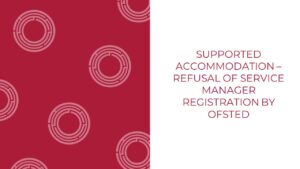Healthcare practitioners that have undertaken additional accredited training may consider whether to become dual regulated. By dual regulated, we mean a healthcare practitioner becoming a registrant of two regulators. As an example, and after completing the requisite training and qualifications required:
- a British Association for Counselling & Psychotherapy (BACP) registered Psychotherapist becoming registered with the Association of Child Psychotherapists (ACP); or
- a Health & Care Professionals Council (HCPC) Practitioner Psychologist becoming a registered Psychoanalyst with the British Psychoanalytic Council (BPC); or
- a General Medical Council (GMC) registered Maxillofacial Surgeon becoming registered with the General Dental Council (GDC).
Whilst being associated with two regulators can bring its benefits, it can also bring its fair share of burdens which are often overlooked and not fully appreciated by practitioners before registering with the second regulator.
Within this article, we aim to highlight the benefits and burdens of dual regulation to enable Healthcare practitioners to understand the full extent of regulation when considering whether to become dual regulated or not.
What advantages can dual regulation bring?
Dual regulation can bring many benefits to a healthcare practitioner including:
- Quality assurance – Having a quality assurance mark against your name on two separate registers. This can be commercially lucrative and provides quality assurance to prospective patients.
- Logo use – In connection with Professional Standards Authority (PSA) voluntary accredited registers, being able to use the PSA Accredited Mark on your website and marketing materials alongside your regulator’s logo. This provides quality assurance to patients and can distinguish your practice from competitors when advertising on directories.
- Monthly newsletter from your regulator – Access to sector specific news and usually, a monthly magazine or newsletter subscription.
- CPD – Networking opportunities, job opportunities and access to sector specific Continuing Professional Development (CPD) materials and training courses.
What are the disadvantages of dual regulation?
Whilst dual regulation has many commercial advantages, healthcare practitioners should also be aware of the following burdens:
- Two renewals, two sets of fees – Each regulator has its own renewal cycle and dual regulated healthcare practitioners must ensure they renew and pay their annual retention fee to each regulator by the stipulated deadline. Failure to do so could result in removal from the register(s).
- Two CPD cycles – Each regulator has its own CPD cycle and dual regulated healthcare practitioners must ensure they note and adhere to the requisite number of CPD hours required (where stipulated), the relevant form(s) for completion; which can vary in form and content, and the stipulated deadlines for submitting their CPD to the regulators. By being dual regulated, a healthcare practitioner can become the subject of a CPD audit by each regulator which can be time-consuming and burdensome.
- Complaints – Being dual regulated means that complaints can be made against a healthcare practitioner to both of their regulators. This, in turn, can result in one patient making the same complaint about a healthcare practitioner to both of their regulators.
- Regulators sharing information – Regulators tend to record whether a registrant holds other professional registrations and may share information with another regulator where they deem the other regulator to be better suited to address the complaint raised by the patient.
- Fitness to Practise – If a healthcare practitioner is required to make a declaration to their regulator, such as a notification of conviction as an example, this will need to be made to both regulators. In addition, and most poignantly, if a sanction is imposed against a healthcare practitioner’s registration by one regulator, it is highly likely the other regulator will raise a Fitness to Practise investigation against the practitioner. Therefore, dual regulated healthcare practitioners can become the subject of two Fitness to Practise investigations which essentially means double the stress and depending on your indemnity arrangements, two sets of legal costs if you chose to become legally represented.
Regrettably, it is only when a Fitness to Practise complaint is raised against a dual regulated healthcare practitioner that the burdens of dual regulation become painfully apparent. Whilst this article does not seek to dissuade any healthcare practitioner from seeking dual regulation, it forewarns and (hopefully) forearms healthcare practitioners regarding the realities of dual regulation and enables them to avoid any of the unnecessary headaches.
If you require further information regarding dual regulation or seek assistance in connection with a Fitness to Practise investigation (or two), then speak with Ridouts on 0207 317 0340.







